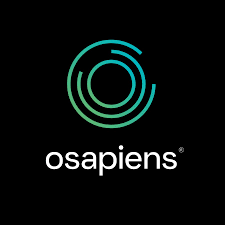Top 5 Third Party Risk Management Software Platforms in 2025

Organizations today operate within increasingly complex vendor ecosystems, where third party relationships introduce cascading risks spanning cybersecurity, compliance, financial stability, and operational continuity. Traditional spreadsheet-based assessments and periodic reviews are no longer adequate. The global market for third party risk management (TPRM) software was valued at approximately $7.9 billion in 2024 and is projected to reach $30.8 billion by 2032, growing at a compound annual growth rate of 18.5%. This surge reflects a strategic reality: third party risk management platforms are no longer optional; they are mission-critical infrastructure that connects vendor oversight, risk intelligence, and business resilience in real time.
The right platform transforms third party risk from a reactive audit exercise into a continuous, intelligence-driven discipline. Organizations leveraging these tools can identify emerging threats, accelerate vendor onboarding, and maintain defensible oversight across hundreds or thousands of third party relationships. The five vendors below (ProcessUnity, OneTrust, Prevalent, BitSight, and Venminder) represent the top tier of this transformation, each offering distinct advantages depending on enterprise scale, industry verticality, and risk complexity.
1. ProcessUnity
Overview: ProcessUnity is a prominent vendor risk management solution offering a comprehensive suite of features, including automated vendor onboarding, risk scoring, classification, vendor issue management, and overall vendor risk management functionalities. Its strength lies in configurability and enterprise-grade workflow automation that supports organizations of various maturity levels.
Key Features:
- Automated vendor onboarding and sourcing workflows
- Risk scoring and classification with customizable frameworks
- Agreement tracking and contract management integration
- Continuous monitoring with exchange platform for shared assessments
- Robust reporting capabilities and customizable dashboards
- Integration with GRC platforms, visualization tools, and ticketing systems
Pros:
- Noted for its customer support and automated workflows that streamline third party risk management processes
- Comprehensive risk assessment capabilities, including vendor risk scoring and categorization features
- Continuously updating library of point-in-time assessments that map to current risks in the third party threat landscape
- Flexible deployment options suitable for various organization sizes
- Fully functional bidirectional API for seamless integrations
Cons:
- Some users have reported instances of inaccurate third party risk reporting based on legacy data
- Users have reported clunky risk assessment workflows and sluggish support when attempting to resolve such issues
- Implementation complexity may require dedicated resources for optimal configuration
Analytical Insight: ProcessUnity excels where organizations need deep configurability and comprehensive vendor lifecycle management. Its competitive advantage lies in balancing automation with customization, making it ideal for enterprises seeking to build sophisticated, scalable TPRM programs that adapt to evolving risk landscapes.
2. OneTrust
Overview: OneTrust launched in 2016 to offer privacy management and marketing compliance solutions, and now provides OneTrust Third-Party Risk Management (previously Vendorpedia) to help organizations evaluate customer, employee, and vendor data transfers. The platform integrates TPRM with broader privacy and compliance governance.
Key Features:
- Customizable questionnaire workflows with extensive regulatory coverage
- Automated privacy impact assessments and data mapping
- Incident and breach management with automated task generation
- Third-Party Risk Exchange for accessing pre-completed vendor assessments
- Integration capabilities with multiple enterprise systems
- AI-powered features to accelerate questionnaire completion
Pros:
- Comprehensive and versatile tool for security, governance, and privacy with ability to create coherent systems for security and privacy governance, risk management, and assessments
- Quick to master and highly intuitive, supporting fast TPRM program implementation
- Highest user reviews cite its usability and accessibility, quality of technical support, and high-quality automation for vendor management
- Strong integration with compliance and privacy frameworks
- One of the few TPRM solutions that offer a free trial option
Cons:
- Delayed recognition of external risk factors could affect the accuracy of risk assessments
- Relies on external security ratings partners for comprehensive continuous monitoring
- Some users report difficulties when generating or uploading PDFs and occasional slow performance when handling large data volumes
- Can be complex to implement for full feature utilization
Analytical Insight: OneTrust shines in organizations where vendor risk management must integrate seamlessly with privacy, data governance, and broader compliance programs. Its strength is versatility and user-friendliness rather than pure TPRM depth, making it ideal for compliance-first organizations seeking a unified platform.
3. Prevalent
Overview: Started in 2004, Prevalent is an IT consulting firm that specializes in governance, risk, infrastructure, and compliance technology, offering customers a suite of third party risk management solutions through the Prevalent TPRM Platform. The platform emphasizes continuous monitoring and risk intelligence at scale.
Key Features:
- Inherent risk scoring and automated risk assessments with workflows
- Access to risk intelligence for over 10,000 vendors through Vendor Risk Networks, leveraging data from over 500,000 sources
- Continuous risk monitoring and remediation management
- Vendor onboarding and threat monitoring capabilities
- AI-powered capabilities for data analysis and platform navigation
- Exchange platform for sharing completed vendor risk reports
Pros:
- Highest reviews cite ease of integration and deployment, profile management, and technical support
- One of the best options for buyers looking to move beyond TPRM software into fully managed services and strong customer support
- Users have reported excellent ongoing customer support with prompt replies for any ongoing issues
- Users have real-time access to completed risk reports for thousands of companies through vendor intelligence networks
Cons:
- Only basic risk-scoring capabilities available, with customization limited at the customer level
- The user interface is less intuitive than some competitors
- Most customization happens only through the vendor rather than customer control
Analytical Insight: Prevalent delivers value through its massive vendor intelligence network and managed services approach. Organizations seeking rapid vendor insights backed by extensive threat intelligence will find Prevalent particularly compelling, though those requiring deep customization may find limitations.
4. BitSight
Overview: BitSight (known as a pioneer in the security ratings space) is a top provider of TPRM solutions, using sophisticated algorithms and daily security ratings to help organizations manage third party risk. The platform provides external, non-intrusive security assessments combined with vendor risk management workflows.
Key Features:
- Daily security ratings using sophisticated algorithms
- Continuous monitoring, automated vendor risk assessments, and measurable outcomes
- External security posture assessments without requiring vendor participation
- Over 60,000 vendor profiles available in vendor intelligence network
- AI capability named Groma for improved risk scoring, identification and attribution of digital assets, and enhanced criticality classification
- Integration with popular platforms like ServiceNow, Splunk, ProcessUnity, and MetricStream
Pros:
- Highest reviews cite the timeliness of vendor response to product questions and patching cadence
- Non-intrusive assessment methodology reduces vendor friction
- Integrates with other VRM tools to offer users the best of the TPRM market
- Provides objective, data-driven security ratings
- Strong focus on cybersecurity and threat intelligence
Cons:
- Not easy to filter data results or update report results as issues in the network are resolved
- Primarily focused on cybersecurity risks rather than comprehensive TPRM
- Pricing information not transparently provided
Analytical Insight: BitSight leads in organizations where cybersecurity risk assessment is the primary concern. Its external assessment methodology and security ratings provide unmatched visibility into vendor security posture without vendor cooperation, ideal for security-first risk programs.
5. Venminder
Overview: Venminder launched in 2003 as a SaaS vendor that streamlines third party risk management, focusing on the entire vendor lifecycle with tools for onboarding, due diligence, and continuous oversight. The platform emphasizes practical usability and comprehensive vendor lifecycle management.
Key Features:
- Document storage and vendor onboarding workflows
- Contract tracking and questionnaire management
- Risk assessments conducted by expert teams
- Automated questionnaires and scorecards for continuous monitoring
- Platform serves as one-stop solution for managing TPRM programs
- Educational content and conference contributions from staff experts
Pros:
- Managers and administrators can take advantage of simplified risk assessments, contract management features and questionnaires
- Superior quality end-manager onboarding and training with wealth of positive reviews prioritizing support
- Platform utilized by diverse range of users to execute TPRM programs
- Assessments carried out by team of experts which enables identification of potential risks and understanding of strengths in vendors’ security, privacy, and regulatory compliance
Cons:
- May lack advanced features compared to enterprise-scale platforms
- Limited information on advanced automation and AI capabilities
- May be more suitable for mid-market organizations than global enterprises
Analytical Insight: Venminder excels in organizations valuing simplicity, expert support, and practical vendor lifecycle management over cutting-edge technology. Its strength lies in making TPRM accessible and manageable for teams that need straightforward, effective vendor oversight without overwhelming complexity.
Strategic Outlook: The Next Generation of TPRM Platforms
The evolution of TPRM platforms is accelerating along three key vectors: automation, AI-powered intelligence, and continuous monitoring. TPRM solutions are providing automated compliance management tools that help organizations track regulatory changes, assess third party compliance, and generate audit-ready reports. Platforms are embedding machine learning to anticipate vendor failures and emerging risks before they materialize into incidents.
Regulatory requirements are expanding, with frameworks like GDPR in Europe and CCPA in California mandating comprehensive risk assessments and due diligence for third party engagements. Additionally, the complexity of supply chains and the rise of fourth-party risks are driving demand for platforms that provide comprehensive visibility beyond direct vendors.
Success will hinge on three capabilities:
Connected intelligence: Integration across procurement, legal, security, and finance with real-time data flows from multiple risk domains including cybersecurity, financial health, and compliance status
Predictive analytics: AI and machine learning models that identify emerging vendor risks, predict potential failures, and prioritize remediation based on business impact
Scalable automation: Platforms that reduce manual assessment burden through intelligent questionnaire distribution, evidence collection, and continuous monitoring while maintaining audit-ready documentation
Key Takeaways
TPRM platforms have shifted from compliance checklists to strategic infrastructure. ProcessUnity leads in configurability and enterprise workflow automation, OneTrust excels in integrated privacy and compliance management, Prevalent delivers extensive vendor intelligence and managed services, BitSight provides unmatched cybersecurity-focused external assessments, and Venminder offers practical, user-friendly vendor lifecycle management.
Enterprises adopting these top 5 TPRM platforms can centralize vendor data, automate assessment workflows, and make faster, smarter decisions that mitigate operational and regulatory risk. Organizations are increasingly seeking integrated solutions to address challenges and ensure robust third party management strategies. For modern organizations, TPRM platforms are no longer just a compliance tool; they are a foundation for sustainable growth, operational resilience, and competitive advantage.





